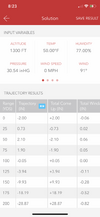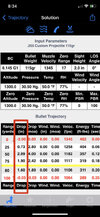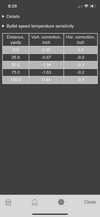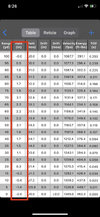twofewscrews
Member
I wish. Play with the numbers. My velocity would have to be off by 500fps and even if my sight height was off by half an inch, up or down, it still wouldn't explain it.This all day long.
The calculator is right using 25, 50, and 100 yard zero's. I've used "proper" scopes before and had such a wild deviation, but other then getting on paper I also never shot closer then 25 yards.





